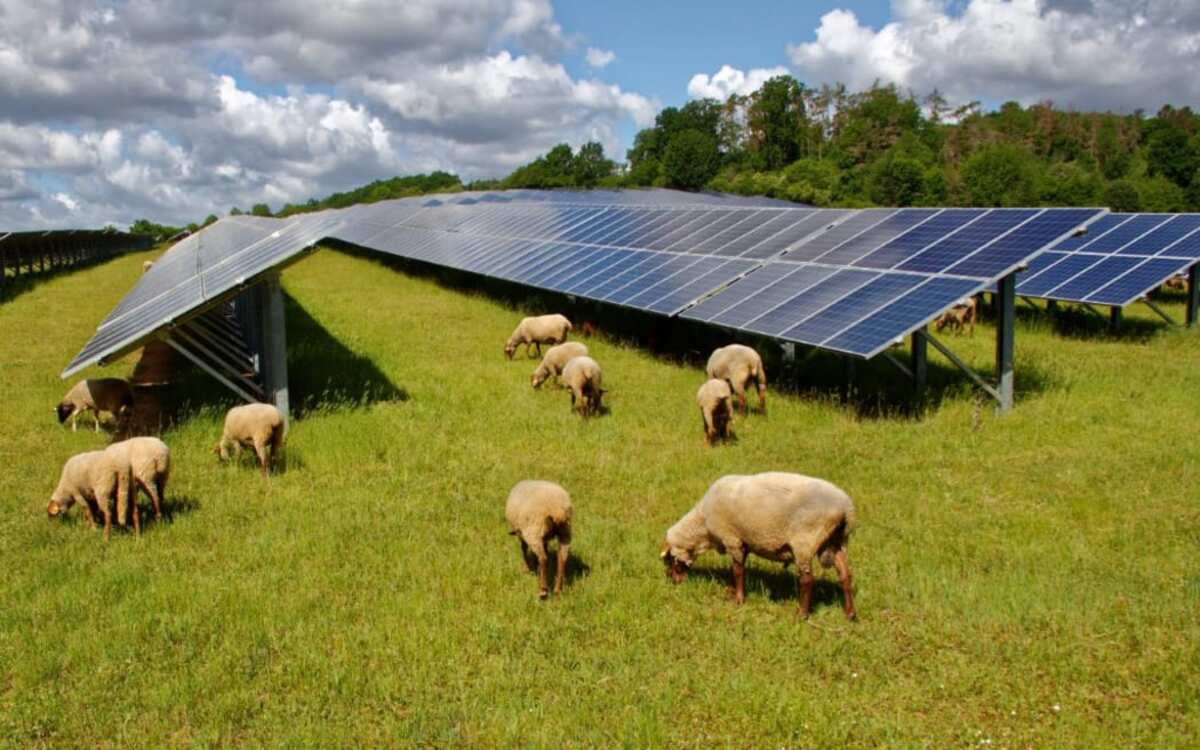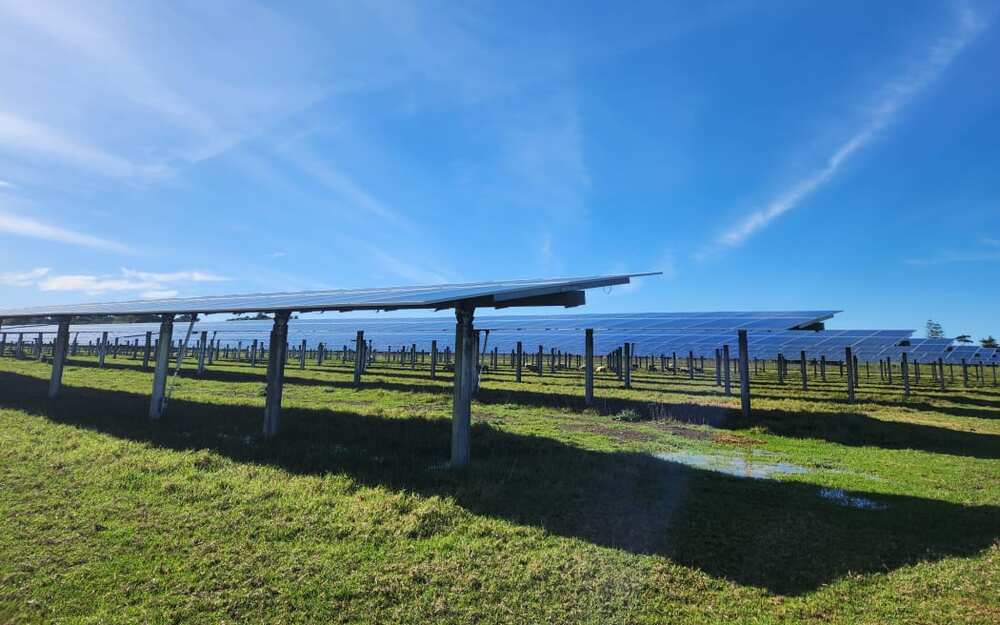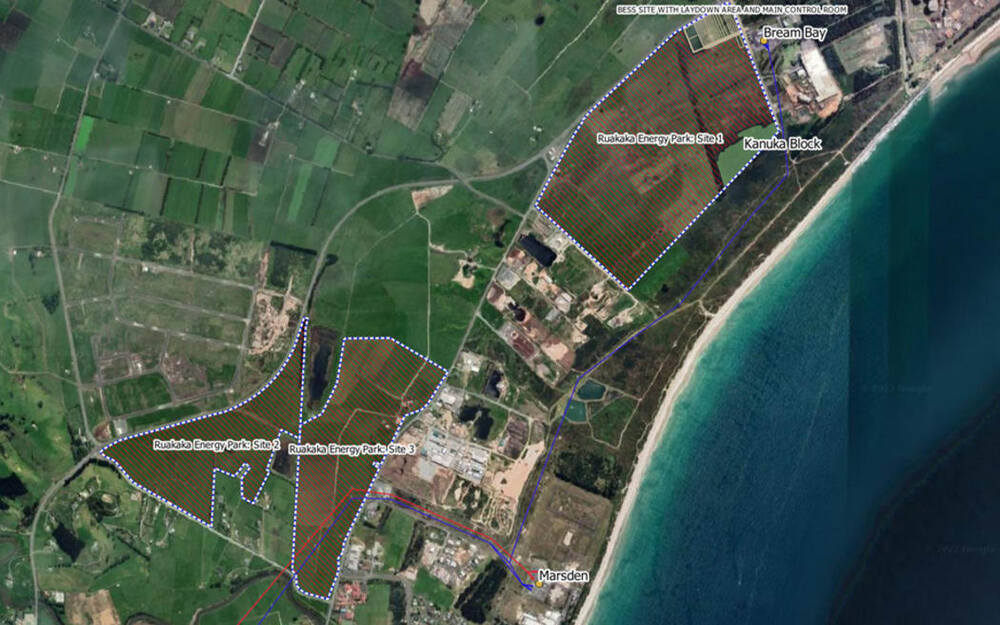Construction capacity can't keep up with 'phenomenal' demand for solar power
RNZ
01 April 2025, 7:07 PM
 A 2022 artist's impression of a proposed Harmony solar farm for eastern Waikato. Photo: Supplied
A 2022 artist's impression of a proposed Harmony solar farm for eastern Waikato. Photo: SuppliedA renewable energy company says it can't get enough construction crews to build as many solar farms as it wants to.
Harmony Energy Managing director Garth Elmes said appetite to lend on solar is "phenomenal" but there are other barriers.
"The key one we're facing at the moment as a business is construction market capacity, that's the key bottleneck that we see, is being able to actually build these assets as quickly as we'd like to."
Harmony Energy is part of a joint venture with gas company Clarus to build the country's biggest solar farm near Te Aroha in Waikato.
By 2026 it will be generating enough to power 35,000 homes - while allowing sheep to graze under and around the panels.
From starting out as a tiny player in the electricity system, solar power generated more electricity than coal and gas combined for the first time over summer, albeit only for a few days, according to the Electricity Authority.
Overall, solar farms generate just 2 per cent of the country's power now, but by 2030 Meridian Energy thinks it will be 7 to 8 per cent.
Elmes said grid-scale solar is in its infancy here compared with other countries where Harmony operates.
The first big solar farm was connected to the grid in Kaitāia in 2023 and four more have opened since, with several others underway.

Kohirā Solar Farm, near Kaitaia, started operating in February 2024 Photo: RNZ/Sally Round
Lightyears Solar is officially opening its Waingawa Solar Farm in Wairarapa next week.
The Electricity Authority said a 2023 survey of investors showed 45 percent of committed future generation was solar.
While solar developers said they won't fix New Zealand's 'dry year problem' on their own, every bit of electricity people draw from solar panels helps save water in the hydro dams to get through those dark winter evenings.
Meridian's Guy Waipara said for a long time, solar was more expensive to build than its competitors, wind and geothermal.
"The balance of the cost of these technologies and the scaling up of solar facilities offshore, particularly in China, means costs have come down dramatically in the last decade, so now we're starting to see solar projects that are cost comparable to wind and geothermal."
He said that's why it's beginning to feel as if a solar project is announced every other week, each one the biggest yet.
Meridian's first solar farm is set to begin construction at Ruakākā in Te Tai Tokerau Northland this August, eventually producing enough power to supply about half of Northland's homes.
To partly get around the fact that solar produces electricity mostly during the middle of the day, Meridian is also building a large battery alongside the solar farm. Grid-scale batteries can draw power when it's cheap and plentiful and release it when prices are high.

Satellite image showing the three sites of Meridian’s planned Ruakākā Solar Farm. The battery site is at top right. Photo: Supplied / Meridian
Waipara said the new battery will only be able to run at peak output for maybe two hours, but since peak demand on the grid typically lasts only 30-60 minutes, it helps. Another benefit is that batteries can store electricity in the North Island where demand is stretched, whereas most hydro storage is in the South Island.
Fittingly, the renewable energy setup is almost within touching distance site of a former coal-fired power station - Marsden B, now decommissioned with its functioning parts sold overseas.
"This year, all things going well, we're planning on committing to over a billion dollars in new project investments, two solar and one wind project," he said. "That's a material difference for Meridian and a material difference for New Zealand."
Waipara said Meridian expects a similar capital spend next year.
In the UK where it started, Harmony Energy specialises in big batteries, but it's first project here will be purely solar - no battery.
Elmes said the company expects that as solar generation grows, batteries will make more sense, however, New Zealand's market is in its infancy compared with other places Harmony operates.
"As more solar is connected, you'd expect to see the impact of that low cost generation pushing down wholesale prices, which may create volatility between for example midday power prices and peak power prices for example in the evening - and that volatility can help support the case for a battery."
Like Meridian, Harmony has several other projects planned, including both solar and batteries, and is aiming to get one underway every year.
While these developers are realistic that solar is just a piece of the answer to giving New Zealand energy security, they're confident it can help - alongside wind and geothermal - as electricity demand doubles between now and 2050.
This story was originally published by RNZ



